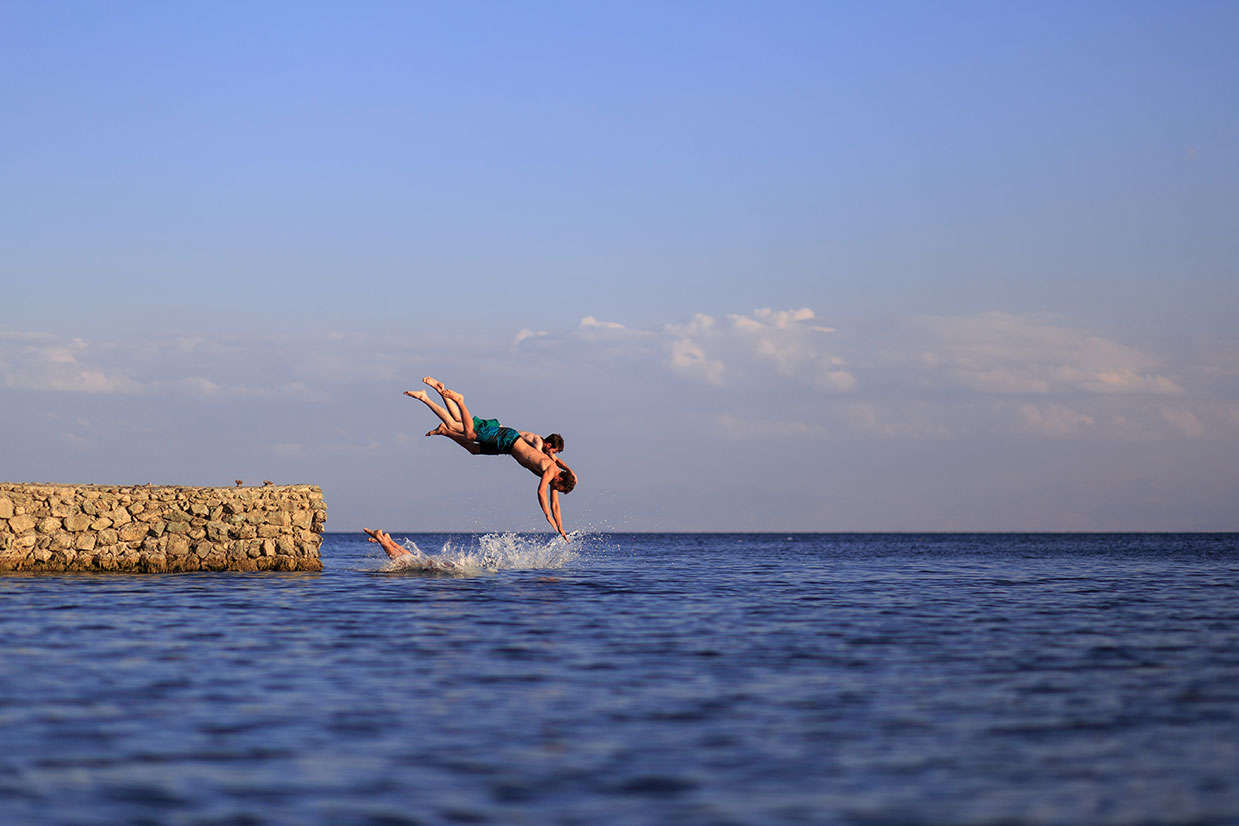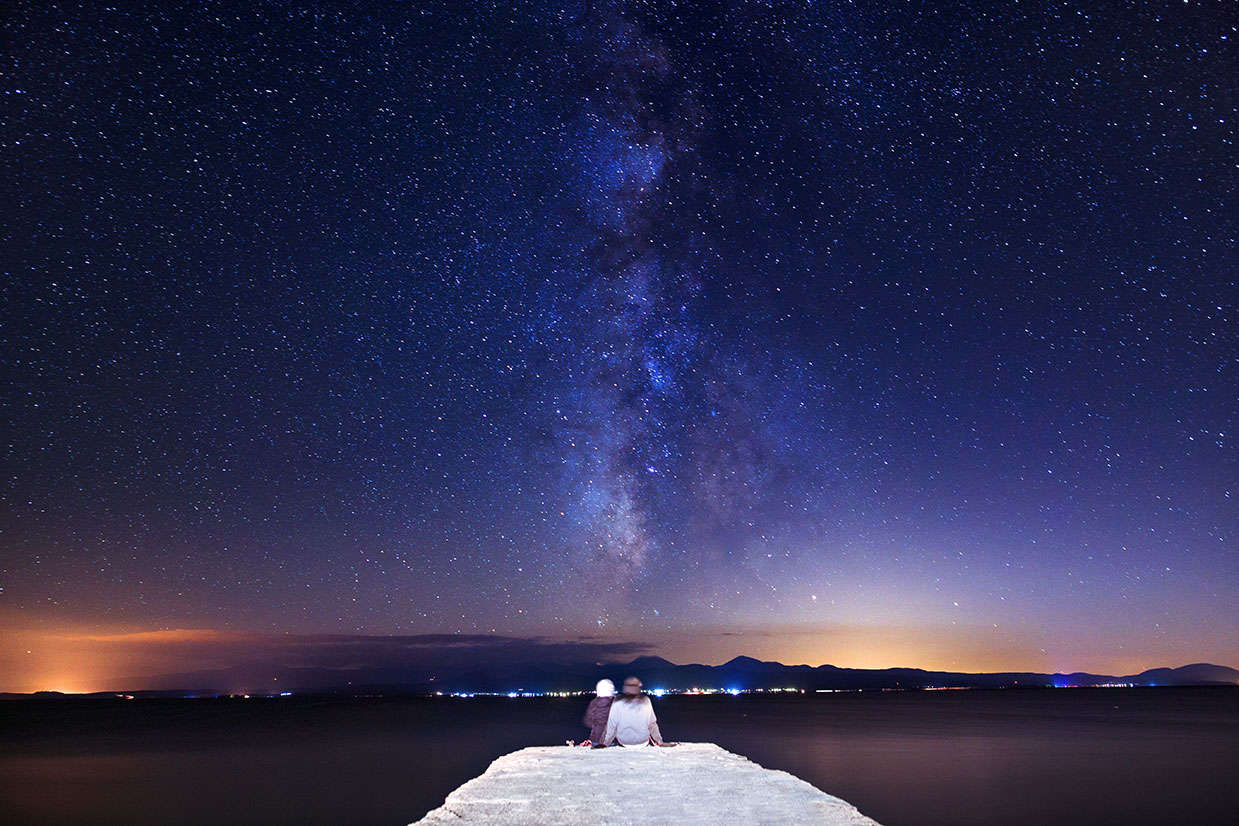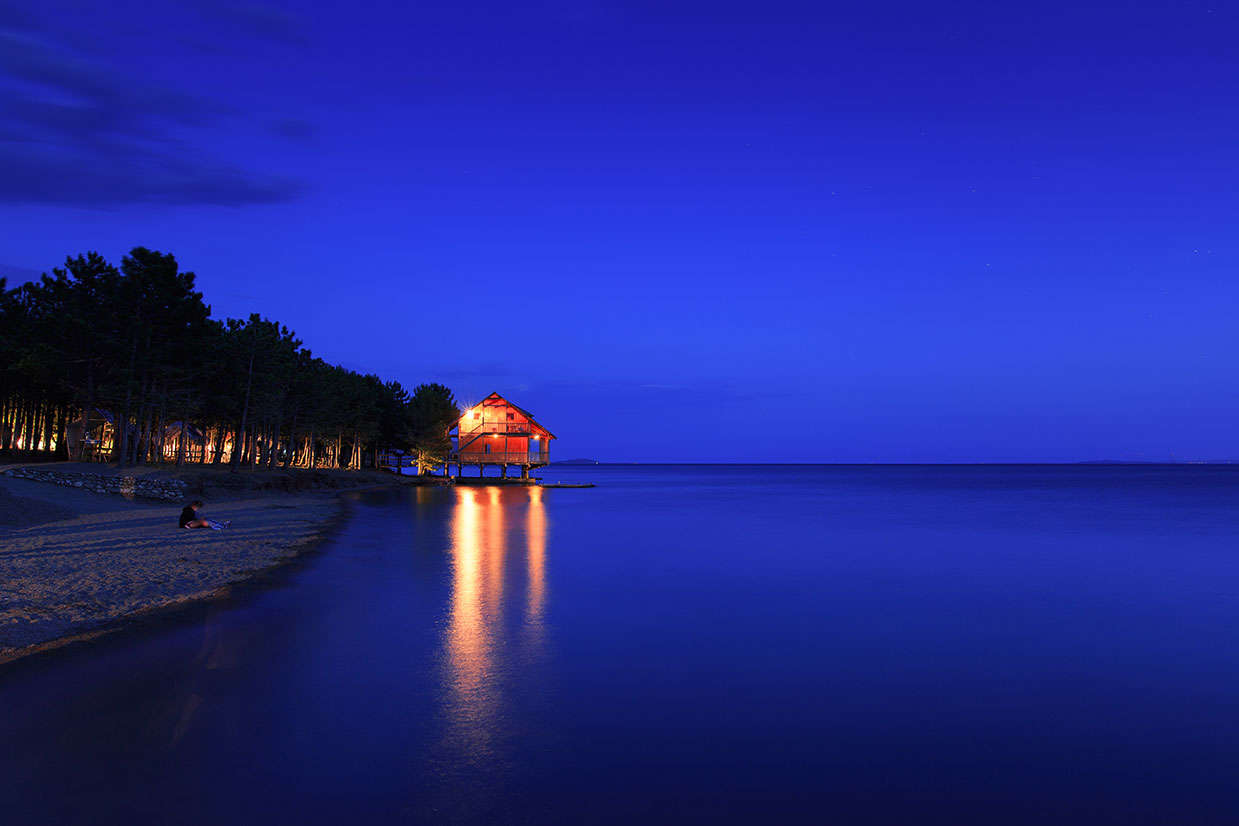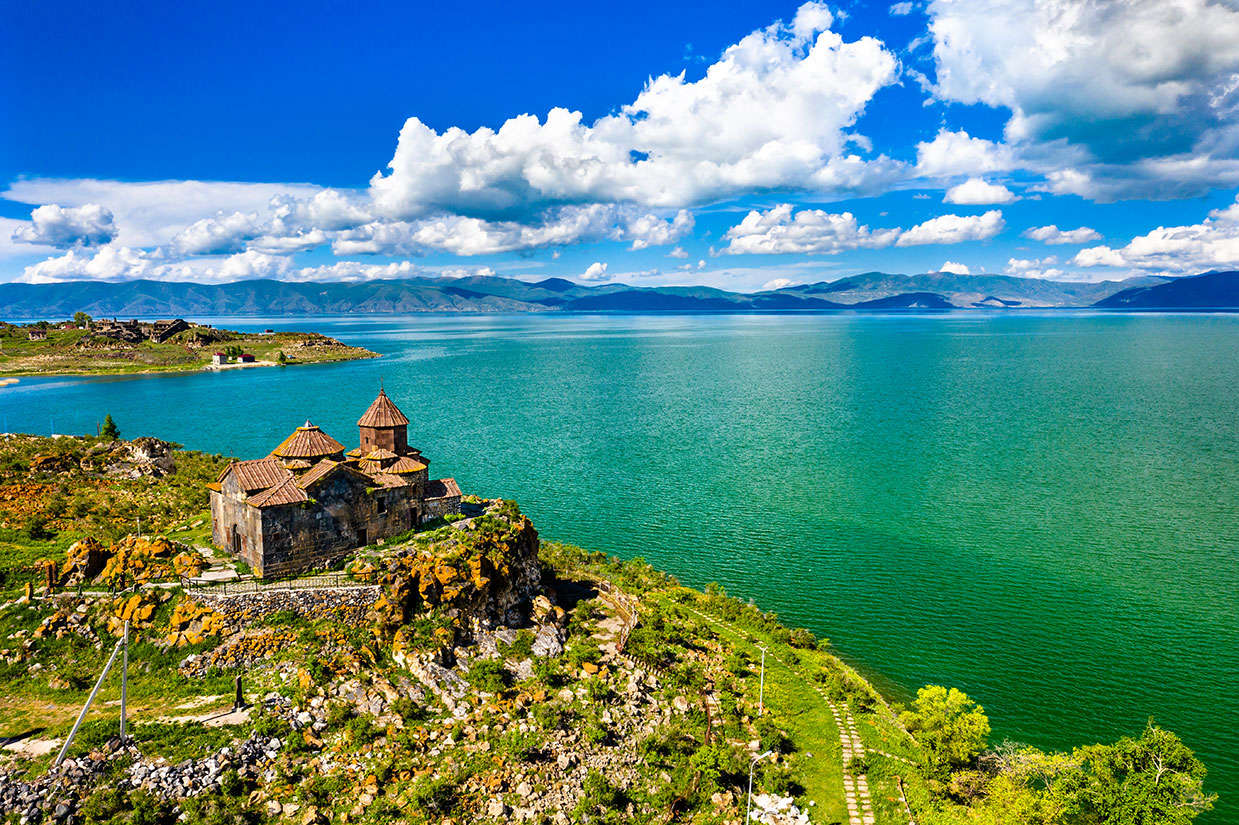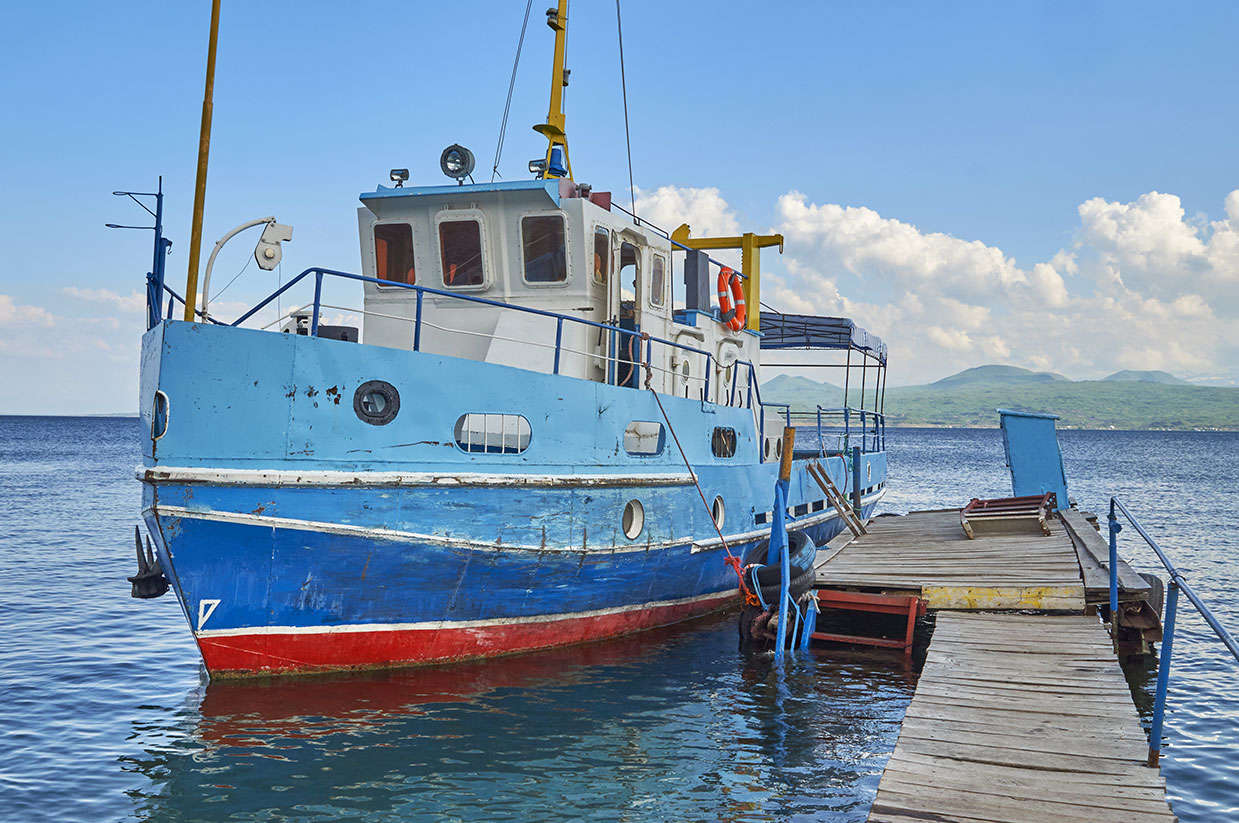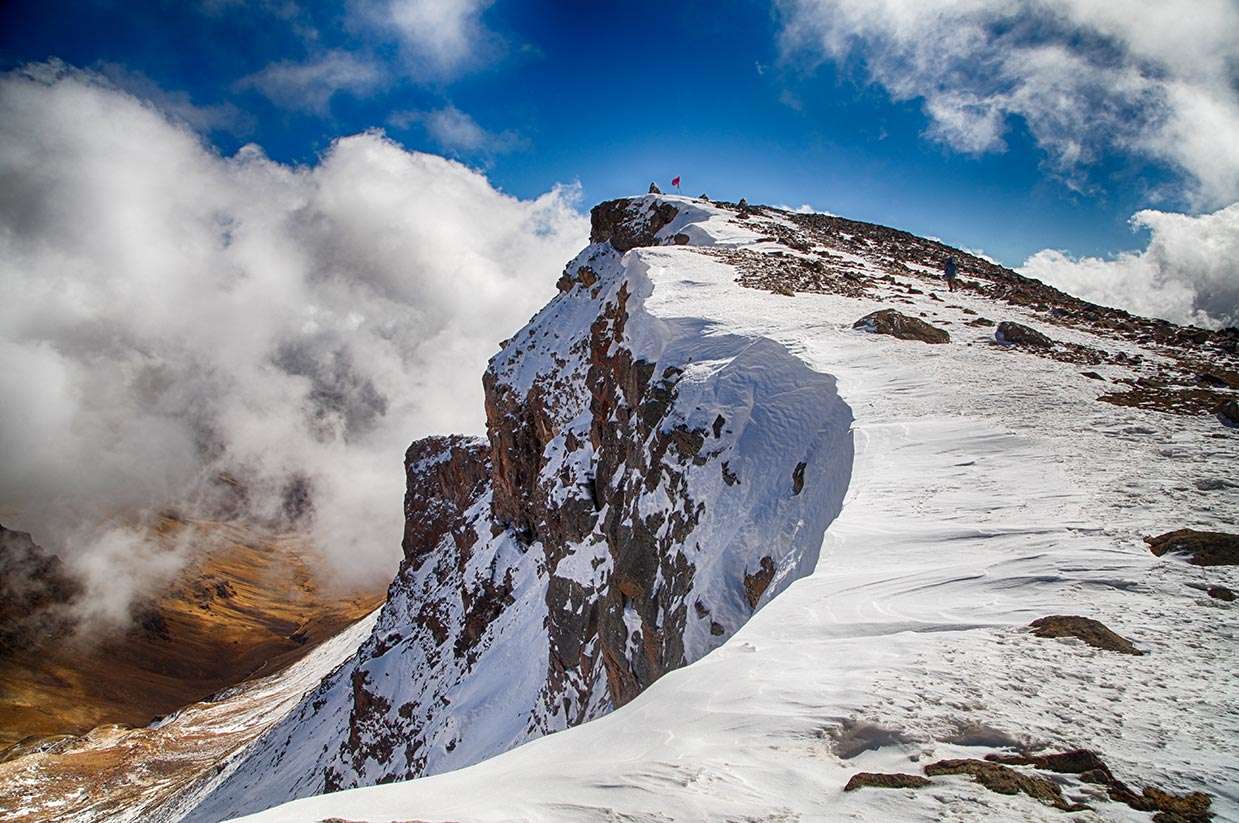Sevan Lake
A lake that the locals call "sea"... The small inland sea with its green mountains is the "pearl of Armenia". It is three times as wide as Lake Geneva. Its turquoise waters attract thousands of Armenians who come to swim and sunbathe on black or white sand beaches in the summer. No traveller should leave Armenia without experiencing the magic of Lake Sevan, a freshwater reservoir with a surface area of 1200 km², that is fed by 28 rivers from the surrounding mountains. Lake Sevan lies at an altitude of 1918 m above sea level and overlooks the Mount Ararat. It is one of the largest mountain lakes in the world and is 79.7 m deep.
Lake Sevan is located in Gegharkunik Province, in Eastern Armenia. The lake is surrounded by the Sevan Mountains, Vardenis Mountains, and Geghama Mountains. There are five species of fish in the lake, three of which are indigenous. The region around Lake Sevan has a vibrant history: precious burials from the Bronze Age were discovered here. In 1906 a Bronze Age cemetery was dug in Zovak. Sevanavank Monastery is located on the largest and most beautiful Sevan peninsula. The monastery was founded in the 9th century on the northwestern shore of the lake. Previously, it was an island, but the agricultural irrigation projects reduced the water level of the lake, making it a peninsula. The monastery consists of three churches, two of which still exist (St. Arakelots and St. Astvatsatsin). The first monastery, dating back to the time of Gregory the Illuminator, was destroyed during the Arab invasion. The construction of the monastery complex was sponsored by the Princess Mariam Bagratuni, the daughter of the Armenian Bagratuni king Ashot I the Great. The buildings of the still existing monastery complex were built on the former island (now a peninsula) during the post-Arab Renaissance (871 - 874). Of the old splendour, only two very similar churches are left: the Arakelots and the Mother of God Church. The rest was destroyed during the Soviet Union in 1930. The Sevanavank Monastery, as already mentioned, consists of two churches today, Surb Arakelots (Holy Apostles) and Surb Astvatsatsin (Holy Mother of God). The architecture of both churches is almost the same. They are made of black tuff in the form of a cross.
The church Surb Astvatsatsin has preserved the essential gifts of the monastery, including 200 manuscripts, 400 printed books, jewellery, crosses, and many other items. In the Surb Arakelots Church, you may still reveal inscriptions preserved from the 9th century. The wooden door of this church is especially noteworthy as it dates back to the 15th century and its carvings show the splendour of medieval Armenian art. In the 1930s, both churches were closed. Today, only the Surb Arakelots Church is open to the public. The Gavit (the church vestibule) was originally decorated with beautifully carved wooden columns. Some of the remnants of this Gavit are now exhibited in the State History Museum in Yerevan and the Hermitage Museum in St. Petersburg, Russia. A narrow path leads to the ruins of another church-like structure supposedly built later than the two churches. Both churches were reconstructed in the 1950s. The monastery was a place of pilgrimage and existed as such until 1930 when the last monks had to leave the village during the Stalin era.
Today, the complex is under the Armenian Apostolic Church's rule, which runs a seminary at the northern end of the peninsula. On the southern shore of today's peninsula, stands a guesthouse of the Writer's Union of Armenia, and on the eastern shore, the summer residence of the President of Armenia is situated. Due to excellent road and rail connections with the capital Yerevan, the tourism industry is well developed, and the scenic spots of Sevan and Sevanavank are much visited. The city of Sevan is located not far from the northwestern part of Lake Sevan. The city was founded in 1842 by exiled Russians and was named after Princess Helena, a daughter of Tsar Paul I Yelenovka. It was only in 1935 that the settlement got its present name.
The turquoise pearl of Armenia allows every visitor to relax fully.
